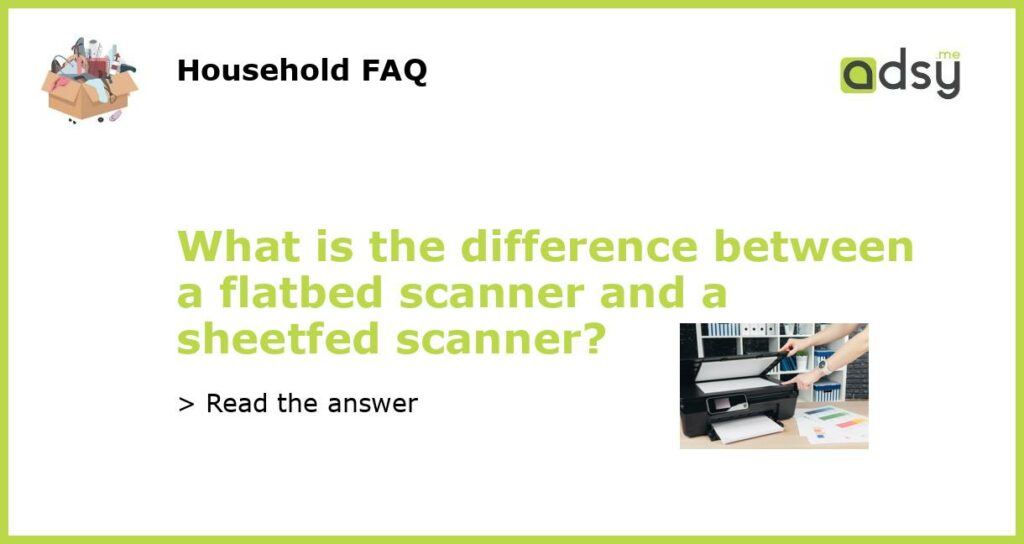Flatbed Scanner vs. Sheetfed Scanner: Understanding the Difference
Scanners have become an essential tool for both personal and professional use. They allow us to convert physical documents into digital copies, making it easier to store, share, and edit them. However, with the different types of scanners available in the market, it can be confusing to know which one to choose. Two popular options are the flatbed scanner and the sheetfed scanner. In this article, we will explore the differences between these two types of scanners, helping you make an informed decision based on your specific needs.
What is a Flatbed Scanner?
A flatbed scanner is the most common type of scanner available in the market. It consists of a glass pane on which you place your documents to be scanned. It uses a scanning head and sensors to capture the image or text on the document and convert it into a digital format. Flatbed scanners are versatile and can scan various types of documents, including photos, books, and fragile originals. They come in different sizes, but the most common ones are A4 or letter size, allowing users to scan standard-sized documents easily.
The Advantages and Disadvantages of Flatbed Scanners
One of the main advantages of using a flatbed scanner is its versatility. With the flat glass surface, you can scan a wide range of items, from photos to thick books. The large scanning area also allows you to scan multiple documents at once using the batch scanning feature. Flatbed scanners typically offer high resolution, allowing you to capture fine details and produce high-quality scans.
However, flatbed scanners do have some limitations. One of the main disadvantages is their bulky size. They take up more space compared to other types of scanners, making them less suitable for small office setups or individuals with limited space. Additionally, scanning multiple documents can be time-consuming as you need to open the scanner lid every time you want to place a new document. For those scanning a large number of documents regularly, a flatbed scanner may not be the most efficient option.
What is a Sheetfed Scanner?
A sheetfed scanner, on the other hand, is designed specifically for scanning loose sheets of paper. It consists of a document feeder that automatically feeds the sheets into the scanning mechanism. Sheetfed scanners are generally more compact and space-efficient compared to flatbed scanners. They are commonly found in offices and other environments where high-volume scanning is required.
The Advantages and Disadvantages of Sheetfed Scanners
Sheetfed scanners are known for their speed and efficiency. With the automatic document feeder, you can load a batch of documents into the scanner, and it will automatically feed and scan each sheet. This makes sheetfed scanners ideal for those who need to scan large quantities of documents regularly. The compact size also makes them more portable and easier to set up in small office spaces.
However, sheetfed scanners also have a few downsides. The document feeder can be more prone to jams, especially if the documents are bent, wrinkled, or stapled. Sheetfed scanners may not be suitable for scanning fragile or delicate documents, as they require direct contact with the scanning mechanism. Additionally, the small scanning area limits the size of documents that can be scanned, making them less versatile compared to flatbed scanners.
Choosing the Right Scanner for Your Needs
When deciding between a flatbed scanner and a sheetfed scanner, it’s important to consider your specific needs and use cases. If you require versatility and the ability to scan various types of documents, a flatbed scanner may be the better option. On the other hand, if you regularly scan large quantities of paper documents and prioritize speed and efficiency, a sheetfed scanner would be more suitable.
Ultimately, the choice between a flatbed scanner and a sheetfed scanner depends on factors such as the type of documents you need to scan, the volume of scanning required, and the available space in your workspace. By understanding the differences and assessing your specific needs, you can make an informed decision and choose the scanner that best meets your requirements.






